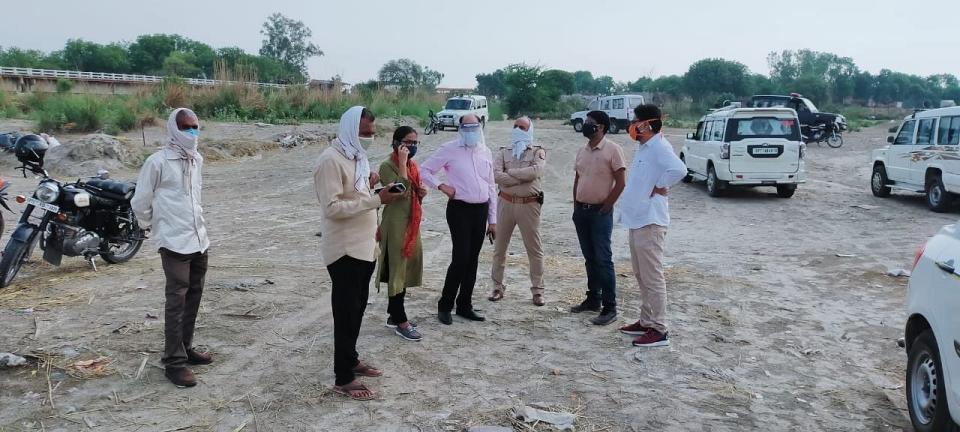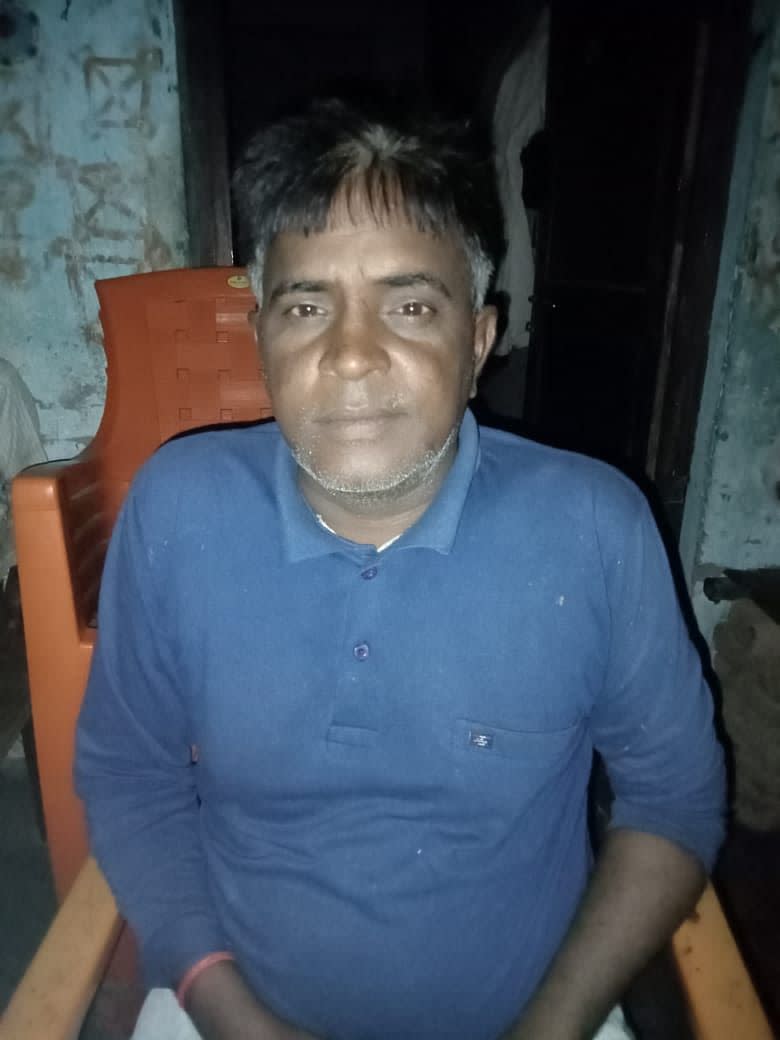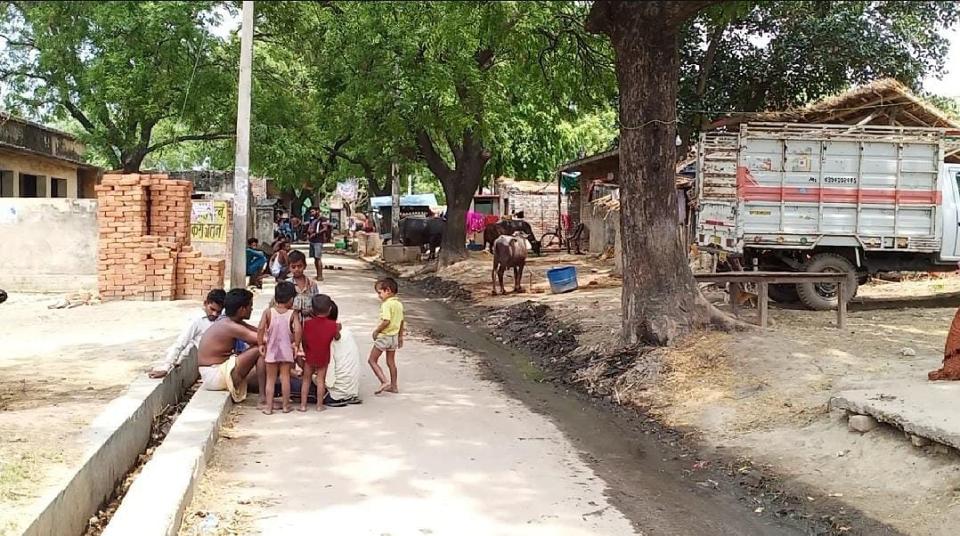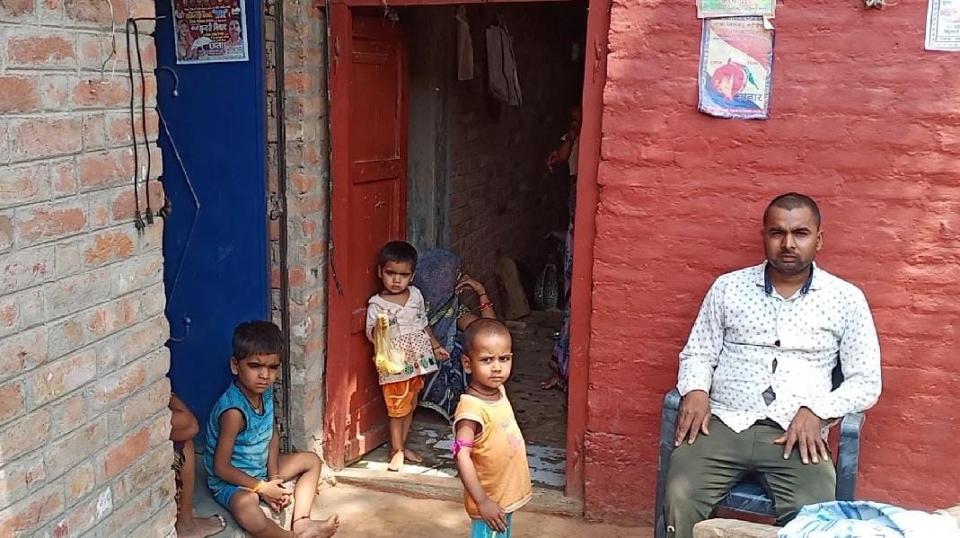Confusion, Fear & Panic in UP’s Unnao After Burials on Ganga Ghat

After images of several hundred bodies buried on Rautapur ghat in Uttar Pradesh's Unnao district started doing the rounds in the midst of the second coronavirus wave, the village nearby has been gripped with fear and panic.
Trying to take control of the narrative, the administration keeps reiterating that there is no clarity if these are COVID deaths or not, but they can also not say for certain that all those buried are COVID negative.
"No, I can not say that either," District Magistrate Ravindra Kumar said.

Ravindra Kumar told The Quint that he has made a team now to look at the burial site, where hundreds of graves were found draped in saffron cloth and marigold flowers, to ensure that the mud on the bodies does not reduce and animals do not dig those bodies out.
"Why would they need to do all this if not for the fear that the burial site could become a source of more infections? The fact is that all this could have been avoided if things were not as unclear and vague to begin with. There is immense panic in the villages here as we do not know if they were COVID positive or not," former sarpanch (village headman) of Rautapur village, Sooraj Pal Singh, told this reporter while repeatedly reiterating that no one from his village could have had COVID.

38-year-old Shiv Kumar, who belongs to the Dhanuk community responsible for burying and cremating people, said, "This ghat has not been designated as a COVID burial site. Whoever comes with the dead bodies, they do not tell us if it is a COVID death or not, there is no protocol for all this on the ghat. We have been burying bodies like we have always, this is not a new custom here."
He also says that that as the second wave of COVID rages, the number of bodies coming has increased. "While earlier we had two bodies a day, now we get up to even five bodies a day," Kumar, who has four children, told this reporter.
The increase that Kumar speaks of again raises questions on the administration’s efforts to downplay the possibility that these could be COVID deaths.
The Quint spoke to the locals, those who work at the burial site, the sarpanch and the district magistrate and found the following:
Also Read: India Increases Gap Between Covishield Doses to 12-16 Weeks
There is fear in the villages to speak openly about the burials.
There is a real concern of COVID spreading.
That Dalits, who are the main community who bury, are worried about being targeted.
‘Been Asked to Not Say Unwanted Things to Media’
After the news of the bodies on the Ganga ghat came out on 12 May, the district officials and the police reached the village. "They got here around 12 midnight the same day and then stayed for another two hours," locals said.
Promptly after, the DM told reporters that a search was being conducted to find more bodies in the area. "I've asked the team to conduct an inquiry, action will then be taken accordingly," he said.

The locals, however, wondered what action he was talking about. Sooraj Pal, the former sarpanch of the village, who lost by 60 votes in the recently concluded panchayat polls, says he had been asking for an electric crematorium for many years.
"It is not like this is a new custom. The government has always known that burials happen here. Then why did they not take action before and wait for the photos to go viral?" he asks.
He also points out that there is no electricity in the village because of the storm. "They are saying some wires have snapped and they do not know when the electricity will return."
Any conversation about what happened after police officials flocked the village only happened after ensuring the anonymity of the locals.
One local from a neighbouring village said, "No one will say anything to you. The administration came in large numbers, inquired about the bodies and told the locals to not say anything untoward while speaking to the media. That is why we are not going to say anything to you. You will go away but we have to live here."
"We were scared when the administration came, there is immense fear of the administration here. They said they will take action on the burials. You never know what they will do or say. The bodies of the people are from this and neighbouring villages. Of course people are scared," another said.

Also Read: One Week & Counting: Wait for Remdesivir in Chennai is Ongoing
One of the people responsible for selling wood to light pyres, said, "The police came at night and removed the saffron cloth from several the dead bodies and put a lot more sand on them. I will not say more, because they will find us but we will not be able to find you."
This reporter spoke to local reporters who said the numbers were much higher. “I went and spoke to those who do the cremations there at night itself, they are evidently under pressure. They told me last night that the number of dead being brought in were around 10 to 12 per day,” a Hindustan reporter who published a story with the same claim in the newspaper, said.
We asked the DM of Unnao if the allegations of pressure on villagers and covering up the issue were true and he denied. "There was no pressure on the locals. The authorities were asked to go to the spot and find the truth after the news came out. Other than that, the authorities did not go there to scare people in their investigation," the DM said.
Fear of COVID Spreading Through Burials
COVID bodies are generally buried in graveyards that are meant particularly for them to ensure that the virus doesn’t spread.
Rautapur ghat is not a designated COVID burial site.
While the DM has said that wherever there is a COVID death protocols are being followed, these protocols only apply to those people who have been hospitalised or tested.

However here, since people are not getting tested and the administration is unsure, the DM says they are encouraging everyone to get cremated rather than buried . Another admission of the vagueness and lack in clarity in handling the COVID pandemic on the ground.
"There is no way to know if they are COVID positive or not. So we are encouraging everyone to burn the bodies rather than bury them. Even if it is against their tradition. In the situation that the burial has to happen, we ensure the body is dug at least 5 feet down," the DM said while accepting himself that currently that is not being followed.
"These people are burying bodies only 2-3 feet down, that does not work. It should be a minimum of 5 feet. We need to ensure that the mud does not run out if it rains and at the same time dogs are not able to pull the bodies out," he said.
"Again I am reiterating, the practice of burying bodies is not new. The administration has known of it always. If they had a problem with burying dead bodies of those with COVID then these directions could have come long ago," Sooraj Pal said.
"If you bury a dead body which died of COVID, the infection will spread. There is fear and panic here, but as villagers we are doing what we can," 35-year-old Sarvesh, the current sarpanch of the village, said. While most villagers use hand pumps for water, others use the water of the Ganga as well. "I am not the only one, you can say that around 90 people in my village continue to drink water from the Ganga river," Buddh Sen, a 32-year-old from the village, told this reporter.
Most of those burying the dead, are Dalits.
"All the people who are Thakurs and Pandits do not bury but burn the bodies. We have been only burying bodies our whole lives," Buddh Sen said.
He adds that people do not have the money to spend on burials anymore, the expenses for which add up to Rs 9,000 or so.
"If you have to give people food, then pay the pandit, then the Dhanuk samaj ke log have to be paid, then the tractor has to be paid to take the dead body to the ghat. These are the expenses," Sen said, adding that there is no place now to bury people. “No one will allow us to use their land, or the land meant for the panchayat, to burn bodies,” he added.

Also Read: Third Wave of COVID-19 Is Inevitable: Govt’s Scientific Advisor
The DM has issued orders that the administration will help with providing wood, but locals have apprehensions. "But why will we go to them. There is a lot of fear of the administration. They are behaving like what we have done is criminal, when we have been burying our dead for generations," he said.
Shiv Kumar also said that despite the order there were inquiries being made of people saying they do not have wood.
The former sarpanch of the village, Sooraj Pal, said that this will affect the poor people the most. "Earlier the wood would be sold at Rs 6 or 7 per kilogram, but as the demand has increased it is being sold at double the price, at Rs 12/13 kg. Around 4 quintal of wood is needed for burning a pyre. That right there is Rs 6,000 or so for the wood, then the additional money to the people for doing the cremation and making arrangements," Jagdish, a local who is around 40 years old, said.
"They will have to now borrow money from relatives and others in the village. Do you think at a time when there is no work or money coming in, people will openly lend as much money? Also why should people go in debt for this," Sooraj Pal asks.
And while burials grabbed national headlines on Unnao’s Rautapur Ghat, no one looked at the conditions of the those who are doing the job of carrying out the ceremonies for the dead.
"We wear one mask or a cloth around our face, we sometimes wear gloves, we do not have PPE kits or anything, we are not even paid by the administration. The people pay us how much ever they want. Madam will you please tell the DM about this?" Kumar asks me.
. Read more on India by The Quint.Confusion, Fear & Panic in UP’s Unnao After Burials on Ganga GhatMusk's Bitcoin U-Turn A Marketing Stunt, Say Industry Experts . Read more on India by The Quint.

 Yahoo Movies
Yahoo Movies 